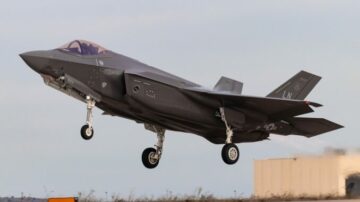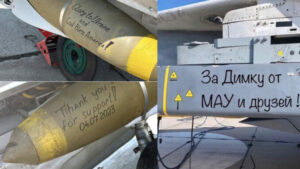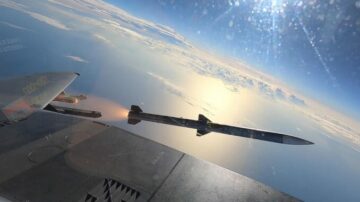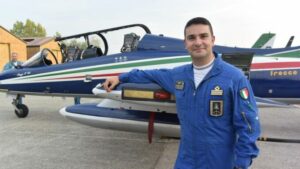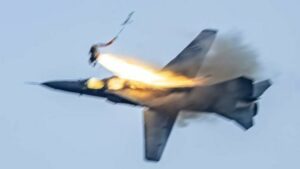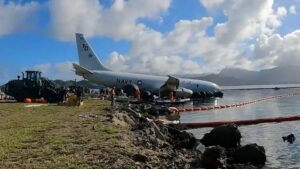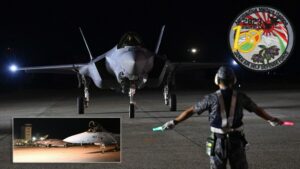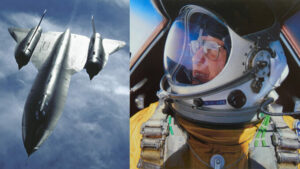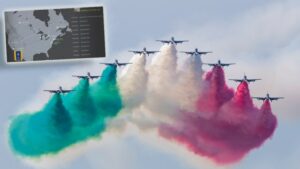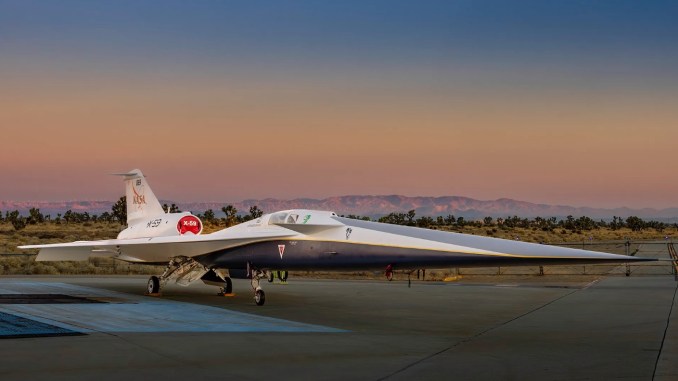
The X-59 made its official debut at Lockheed Martin’s Skunk Works in Palmdale, California.
NASA and Lockheed Martin rolled out the X-59 quiet supersonic aircraft during a ceremony hosted by prime contractor Lockheed Martin Skunk Works in Palmdale, California. “Using this one-of-a-kind experimental airplane, NASA aims to gather data that could revolutionize air travel, paving the way for a new generation of commercial aircraft that can travel faster than the speed of sound,” says an official statement by NASA.
The X-59 Quesst (“Quiet SuperSonic Technology”) is an experimental supersonic aircraft being developed at Skunk Works for NASA’s Low-Boom Flight Demonstrator project for NASA’s Low-Boom Flight Demonstrator project.
Supersonic air travel disappeared with the end of the former-Soviet Tupolev Tu-144 supersonic transport and the famous joint French and English Concorde SST built by Aérospatiale/BAC. The Soviets had little success with their SST program, which predated the first Concorde flight by three months but only remained operational from 1975 until 1978. The Anglo-French Concorde was significantly more successful, flying commercially from 1976 until 2003 when it was retired after a tragic crash on July 25, 2000, at Charles de Gaulle Airport in Paris, France. At the time, neither program achieved a high degree of economic efficiency and both suffered from the constraints of traditional supersonic flight.
New low-boom technology, that works by using an elongated fuselage that (more or less) mutes the sonic boom, should make the X-59 able to fly at 1.4 times the speed of sound, or 925 mph, at 55,000 feet generating a quieter sonic thump than the undesirable and potentially damaging “traditional” loud sonic booms, that are prohibited for commercial flights during overland flight.
For 50 years, the U.S. and other nations have prohibited such flights because of the disturbance caused by loud, startling sonic booms on the communities below. The X-59, is an experimental aircraft 99.7 feet long and 29.5 feet wide flown by a single pilot, designed to generate a quieter sonic boom which should be within acceptable noise levels to help the FAA to lift the ban on commercial supersonic travel over land imposed in 1973: according to NASA, the sonic boom generated by the new aircraft will be less than 75 perceived dB on the ground, about a third less than the Concorde, which was reported around 100-110 dB.
The X-59 is a unique experimental airplane, not a prototype: the technologies used on the jet to achieve the low boom are meant to influence future generations of quiet supersonic aircraft.
The X-59’s thin, tapered nose accounts for almost a third of its length and will break up the shock waves that would ordinarily result in a supersonic aircraft causing a sonic boom. Due to this configuration, the cockpit is located almost halfway down the length of the aircraft – and does not have a forward-facing window. Instead, the Quesst team developed the eXternal Vision System, a series of high-resolution cameras feeding a 4K monitor in the cockpit. The Quesst team also designed the aircraft with its engine mounted on top and gave it a smooth underside to help keep shockwaves from merging behind the aircraft and causing a sonic boom.
“This is a major accomplishment made possible only through the hard work and ingenuity from NASA and the entire X-59 team,” said NASA Deputy Administrator Pam Melroy. “In just a few short years we’ve gone from an ambitious concept to reality. NASA’s X-59 will help change the way we travel, bringing us closer together in much less time.”
“It’s thrilling to consider the level of ambition behind Quesst and its potential benefits,” said Bob Pearce, associate administrator for aeronautics research at NASA Headquarters in Washington. “NASA will share the data and technology we generate from this one-of-a-kind mission with regulators and with industry. By demonstrating the possibility of quiet commercial supersonic travel over land, we seek to open new commercial markets for U.S. companies and benefit travelers around the world.”
With rollout complete, the Quesst team will carry out further activities to prepare the X-59 for first flight, planned for later this year: integrated systems testing, engine runs, and taxi testing.
After the first flight, the aircraft will conduct its first quiet supersonic flight then the Quesst team will conduct several of the aircraft’s flight tests at Skunk Works before transferring it to NASA’s Armstrong Flight Research Center in Edwards, California, which will serve as its base of operations. After the successful completion of the flight tests, NASA plans to fly the X-59 aircraft over several cities across the U.S. to collect data about the sound generated by the experimental airplane and how people perceive it from the ground. NASA will provide that data to the Federal Aviation Administration and international regulators.
- SEO Powered Content & PR Distribution. Get Amplified Today.
- PlatoData.Network Vertical Generative Ai. Empower Yourself. Access Here.
- PlatoAiStream. Web3 Intelligence. Knowledge Amplified. Access Here.
- PlatoESG. Carbon, CleanTech, Energy, Environment, Solar, Waste Management. Access Here.
- PlatoHealth. Biotech and Clinical Trials Intelligence. Access Here.
- Source: https://theaviationist.com/2024/01/13/x-59-roll-out/?utm_source=rss&utm_medium=rss&utm_campaign=x-59-roll-out
- :has
- :is
- :not
- $UP
- 000
- 1
- 12
- 125
- 1973
- 1996
- 2000
- 2024
- 25
- 29
- 2nd
- 4k
- 50
- 50 Years
- 7
- 75
- a
- Able
- About
- acceptable
- According
- Accounts
- Achieve
- achieved
- across
- activities
- administration
- Aeronautics
- After
- aims
- AIR
- Air Force
- air travel
- aircraft
- Airplane
- airport
- almost
- also
- ambition
- ambitious
- an
- and
- ARE
- Armstrong
- around
- AS
- Associate
- At
- Australia
- avatar
- aviation
- Ban
- base
- based
- BE
- because
- before
- behind
- being
- below
- benefit
- benefits
- blogs
- bob
- Books
- boom
- both
- Break
- Bringing
- built
- but
- by
- california
- cameras
- CAN
- carry
- caused
- causing
- Center
- ceremony
- change
- Charles
- Cities
- closer
- Cockpit
- collect
- combat
- commercial
- commercially
- Communities
- Companies
- complete
- completion
- computer
- Computer Engineering
- concept
- Conduct
- Configuration
- Consider
- constraints
- Contractor
- contributed
- could
- covering
- Crash
- credit
- Crime
- damaging
- data
- David
- de
- debut
- Defense
- Degree
- demonstrating
- deputy
- designed
- developed
- different
- Display
- does
- down
- due
- during
- Economic
- editor
- edwards
- efficiency
- end
- Engine
- Engineering
- English
- Entire
- Ether (ETH)
- Europe
- experimental
- external
- faa
- famous
- faster
- Federal
- Federal Aviation Administration
- feeding
- Feet
- few
- First
- five
- flight
- Flights
- flying
- For
- Force
- Forces
- Former
- founder
- France
- French
- from
- further
- future
- gather
- gave
- generate
- generated
- generating
- generation
- generations
- gone
- graduate
- Ground
- had
- halfway
- Hard
- hard work
- Have
- he
- Headquarters
- help
- Hidden
- High
- high-resolution
- hosted
- How
- HTTPS
- image
- imposed
- in
- Including
- industry
- influence
- ingenuity
- instead
- integrated
- Intelligence
- International
- IT
- Italian
- Italy
- ITS
- Jan
- joint
- journalist
- jpg
- July
- just
- Keep
- Land
- later
- Length
- less
- Level
- levels
- little
- located
- Lockheed Martin
- Long
- loud
- Low
- made
- magazines
- major
- make
- many
- Markets
- Martin
- meant
- merging
- Military
- Mission
- Monitor
- monthly
- months
- more
- most
- much
- Nasa
- Nations
- Neither
- New
- Noise
- nose
- of
- official
- on
- ONE
- One-of-a-Kind
- ones
- only
- open
- operational
- Operations
- or
- Other
- Others
- out
- over
- paris
- Paving
- People
- perceived
- photo
- pilot
- Planes
- planned
- plans
- plato
- Plato Data Intelligence
- PlatoData
- player
- possibility
- possible
- potential
- potentially
- Prepare
- Prime
- private
- Program
- prohibited
- project
- prototype
- provide
- Read
- Reality
- Regulators
- remained
- Reported
- research
- result
- revolutionize
- Roll
- Rolled
- rollout
- rome
- runs
- s
- Said
- says
- Seek
- Series
- serve
- several
- Share
- shockwaves
- Short
- should
- significantly
- since
- single
- smooth
- Sound
- speed
- Statement
- success
- successful
- such
- supersonic
- Syria
- system
- Systems
- team
- Technologies
- Technology
- Testing
- tests
- than
- that
- The
- the world
- their
- then
- Third
- this
- this year
- three
- thrilling
- Through
- time
- times
- to
- together
- top
- traditional
- Transferring
- transport
- travel
- travelers
- u.s.
- unique
- until
- us
- used
- using
- Video
- vision
- war
- was
- washington
- waves
- Way..
- we
- when
- which
- wide
- will
- window
- with
- within
- Work
- works
- world
- world’s
- worldwide
- would
- written
- year
- years
- youtube
- zephyrnet


